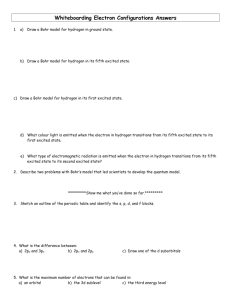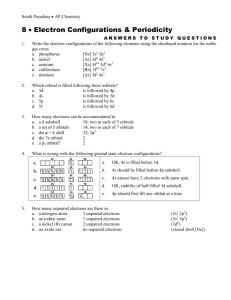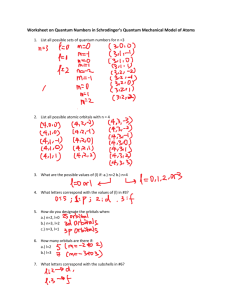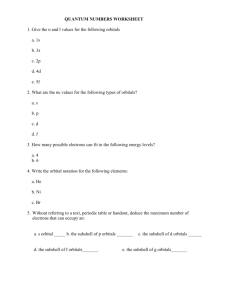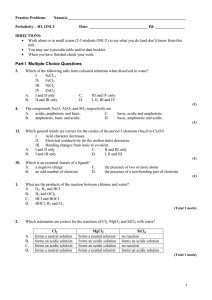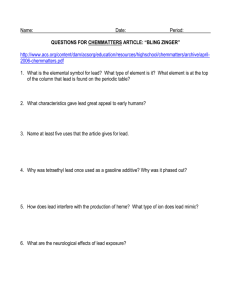Chem by the Numbers
advertisement
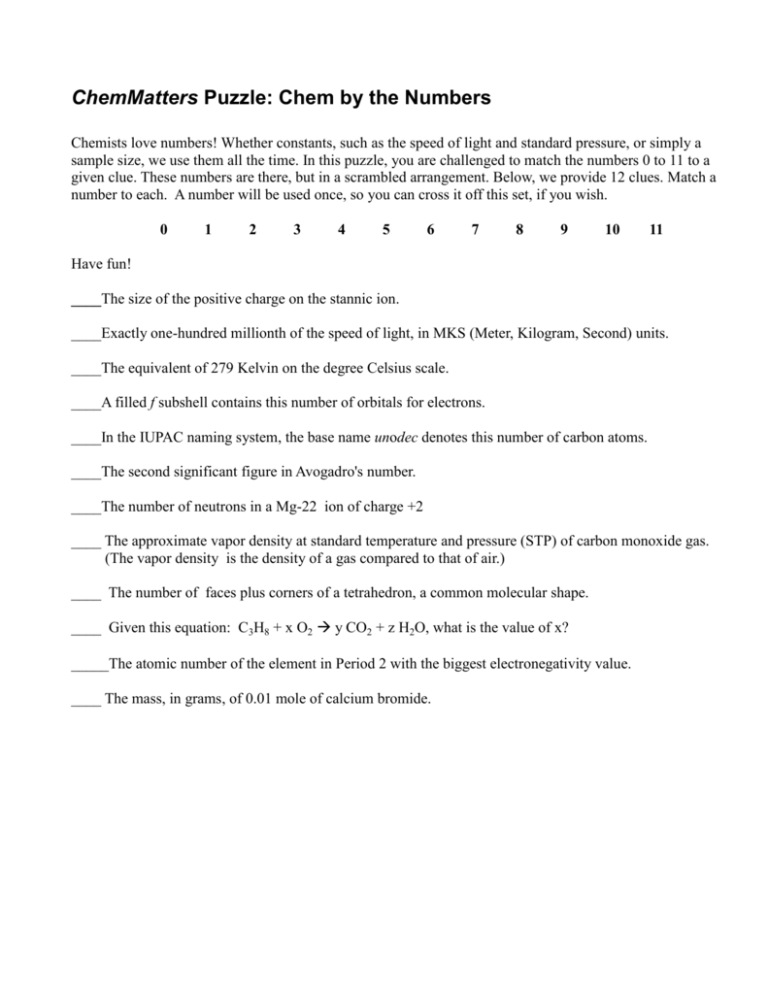
ChemMatters Puzzle: Chem by the Numbers Chemists love numbers! Whether constants, such as the speed of light and standard pressure, or simply a sample size, we use them all the time. In this puzzle, you are challenged to match the numbers 0 to 11 to a given clue. These numbers are there, but in a scrambled arrangement. Below, we provide 12 clues. Match a number to each. A number will be used once, so you can cross it off this set, if you wish. 0 1 2 3 4 5 6 7 8 9 10 11 Have fun! ____The size of the positive charge on the stannic ion. ____Exactly one-hundred millionth of the speed of light, in MKS (Meter, Kilogram, Second) units. ____The equivalent of 279 Kelvin on the degree Celsius scale. ____A filled f subshell contains this number of orbitals for electrons. ____In the IUPAC naming system, the base name unodec denotes this number of carbon atoms. ____The second significant figure in Avogadro's number. ____The number of neutrons in a Mg-22 ion of charge +2 ____ The approximate vapor density at standard temperature and pressure (STP) of carbon monoxide gas. (The vapor density is the density of a gas compared to that of air.) ____ The number of faces plus corners of a tetrahedron, a common molecular shape. ____ Given this equation: C3H8 + x O2 y CO2 + z H2O, what is the value of x? _____The atomic number of the element in Period 2 with the biggest electronegativity value. ____ The mass, in grams, of 0.01 mole of calcium bromide. Answers to the ChemMatters Puzzle 4 The size of the positive charge on the stannic ion. 3 Exactly one-hundred millionth the speed of light in a vacuum, in MKS units. 6 The equivalent of 279 degrees Kelvin is 6 on the degree Celsius scale (279 – 273) 7 A filled f subshell contains this number of orbitals for electrons. 11 In the IUPAC naming system, the prefix unodec denotes this number of carbon atoms. 0 The second significant digit in Avogadro's Number, 6.02 x 10 23 10 The number of neutrons in a Mg-22 ion of charge +2 = (22–12). 1 The approximate vapor density at STP of carbon monoxide gas (both air and carbon monoxide gas have an average molar mass of about 28.8 g/mol). 8 The number of faces plus corners of a tetrahedron, a common molecular shape. 5 In C3H8 + x O2 y CO2 + z H2O: the value of x is 5 (to have 10 oxygen atoms). 9 The atomic number of the element in period 2 with the biggest electronegativity value. 2 The mass in grams of 0.01 moles of calcium bromide. Notes by the author: 4 Stannum is the Latin name of tin; suffix ic implies the more positive charge of +2 and +4. 3 Speed is 3.00 x108 m/sec; 108 = one hundred-million; inverse is 10-8 , so net is 3x 100 = 3. 6 279K is 6 degrees above the freezing point of water on both scales. 1 oC = 1 K in size). 7 7 orbitals, each with a pair of electrons when filled. 11 An example: unodecanol-1 is C11H23OH. 0 In the coefficient 6.02, the 0 is a significant figure, not merely holding a place. 10 The number of neutrons in the Mg ion of mass number 22, atomic number 12. 1 Both are 1.29 g/L, with just about same molar mass of 28.8 g/mol. 8 In a perfect tetrahedron there are 4 faces( equilateral triangles) and 4 corners equidistant from center. Lots of symmetry there! 5 Need 10 oxygen atoms on each side of the equation. 9 Of these eight elements, fluorine (Z= 9) exerts the strongest pull on a shared pair of electrons. 2 The formula is CaBr2, with molar mass of 200 g/mol.


